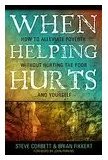Welcome Alex
Today I take a break from ideas (and my promised video post) to introduce you to my fourth child, Alex. He’s one day old, and everyone’s doing great. We couldn’t be more grateful.

Today I take a break from ideas (and my promised video post) to introduce you to my fourth child, Alex. He’s one day old, and everyone’s doing great. We couldn’t be more grateful.

This is mind-blowing. Khan Academy is a collection of over 2,400 education tutorials in the form of YouTube videos. One man started making these videos to tutor his young relatives, and has persisted to a remarkable extent. I am absolutely addicted to these things. He covers concepts from elementary school through college, on an amazing range of subjects, with incredible intuitive clarity. You have to watch one of these things to see the simple magic of it.
What does it mean when any child in the world with motivation, an Internet connection, and an understanding of English can be better-educated that many (most?) high school graduates, for free? Each of his lessons has been viewed over 30,000 times on average. What does it mean when this man (Sal Khan) who isn’t even a certified teacher is now teaching more students than anyone else in the world? What does it mean when dynamic sight-and-sound video is free and textbooks still cost a lot? And what does this say about the power of remarkable diligence and persistence?
All of this is made possible by the Internet. The changes the Internet is bringing to our world are just beginning.
My mind is so blown, I think I have to try it for myself. Watch for a Khan-style video in place of my next blog post. He made 2,400 in a row, let’s see if I can make 1.
Previously I said that “The economic engine is the part where the core value add takes place. It’s the activity in the company that ‘pays the bills’. It’s the part of the business that creates the thing your customers come to you to get.” And I argued that the economic engine part of an organization should be maximized, while the other parts, the support structures, should exist only to the extent that they are needed by the economic engine.
What about donor-supported non-profit organizations? In this case the part that pays the bills (the fund-raising part) can appear to be separate from the part where the core value add takes place (the part where the mission happens, cancer research, for example). Are donors the customers, or are cancer patients the customers? In my time in and around not-for-profits, these questions have always bothered me.
I am not an expert on the non-profit world by any means, so take this as a thought experiment. I suggest this perspective on donor-supported organizations:
1. The donors are the customers that the organization serves. They are the ones buying what the organization delivers, even though someone else often benefits (the cancer patients).
2. The donors are paying for the core value add, successful cancer research. The organization states the mission, and donors who care about that mission pay for it.
3. Therefore, the part that carries out the mission (the research lab) is the economic engine, and fundraising is not the economic engine. It is a support structure there to maximize the output of the economic engine (effective research).
In my ideal, the organization would deliver such effective cancer research results that donors who care about cancer research would be lining up to support it, and fundraising would consume relatively few resources.
If, at the opposite extreme, the organization does not deliver well, but continues to raise funds, this compares to a business that sells a low-quality product through misleading advertising. I think there is more danger of this in the non-profit world than in business, because the donor often does not personally experience the delivery of the product (the research) and may not be in a position to evaluate the true effectiveness of the organization. It might be like buying products from a commercial and having them shipped to someone you will never talk to.
So I conclude that the rules really aren’t different in the non-profit world, but there is an extra need for donors to be deliberately well-informed so they can choose to become customers of the donor-supported organizations that deliver most effectively on the missions they care about.
To anyone paying even a little attention, it’s clear that poverty is a huge problem in the world, and even in the US. Why? What are the causes? What are the solutions? Why do so many attempted solutions seem so ineffective in practice? What can those of us who have compassion and a desire to give do to really make a difference?
I have been often perplexed by these questions, and dissatisfied with the “more for me” motives I see in many vocal participants on both conservative and liberal sides.
 Last weekend I read “When Helping Hurts: How to Alleviate Poverty Without Hurting the Poor, and Yourself” by Brian Fikkert and others authors. This book brings balance and clarity to a wide range of poverty-related issues and questions based on a consistent, sound, integrated theoretical framework.
Last weekend I read “When Helping Hurts: How to Alleviate Poverty Without Hurting the Poor, and Yourself” by Brian Fikkert and others authors. This book brings balance and clarity to a wide range of poverty-related issues and questions based on a consistent, sound, integrated theoretical framework.
There are no easy answers in this book, but there is a great deal of collected experience about what really helps, and what hurts even when well-intentioned. It’s equally applicable to poverty issues in North America and around the world. I recommend it.
One of the recent speakers at my Vistage CEO peer group said this slowly and emphatically:
People don’t listen very long.
This has been resonating in my mind ever since he said it, because it’s true, and increasingly so. Yet many meeting presenters, businesses, friends, writers, etc keep on talking long after the listeners have stopped listening. Make your point clearly, quickly, and compellingly or you’ll probably be tuned out.
This means caring more about what the listener gets to hear than about what you get to say, and that’s not easy.